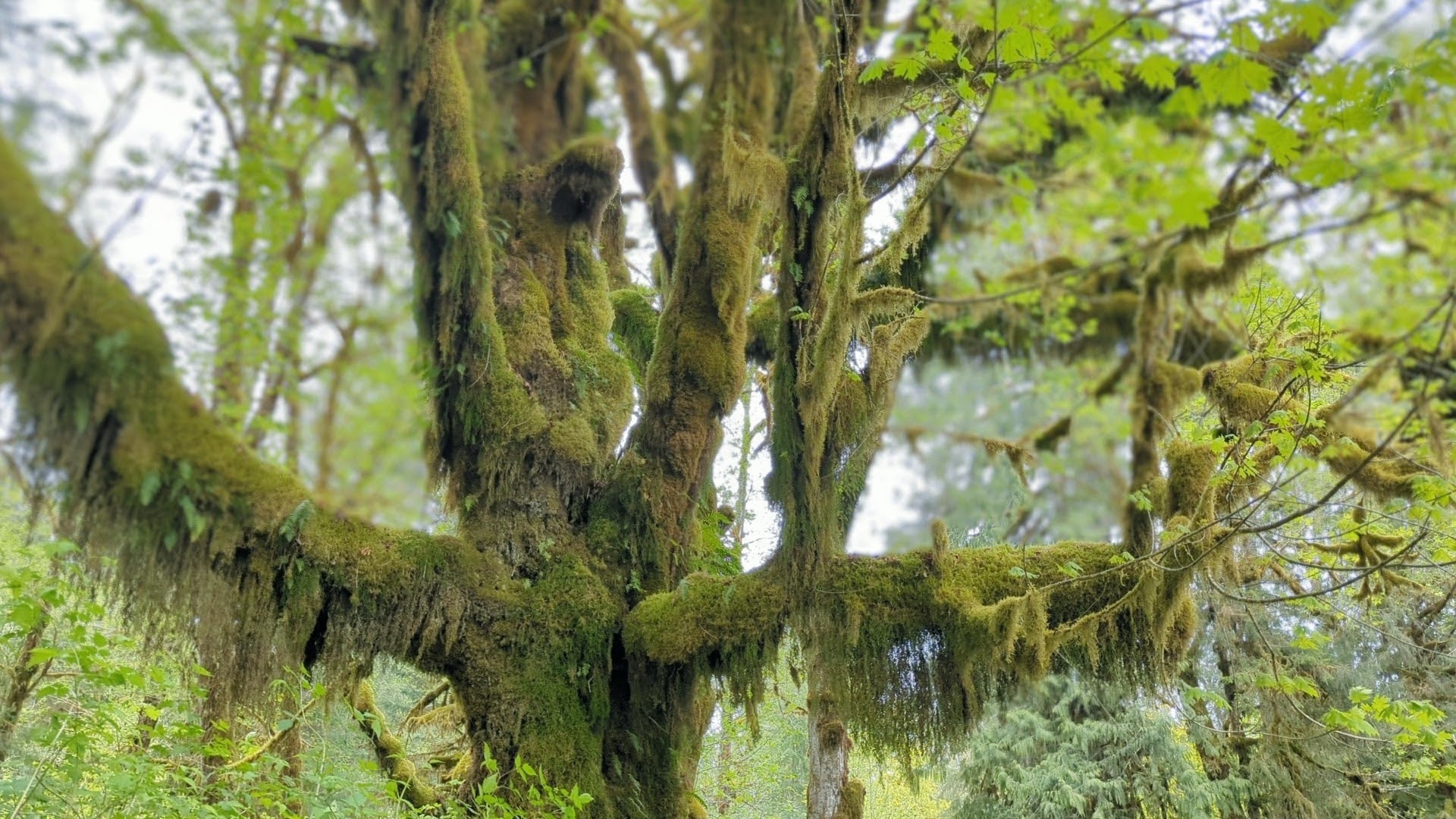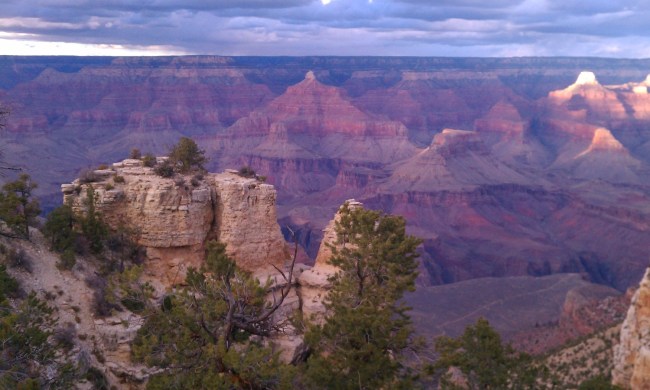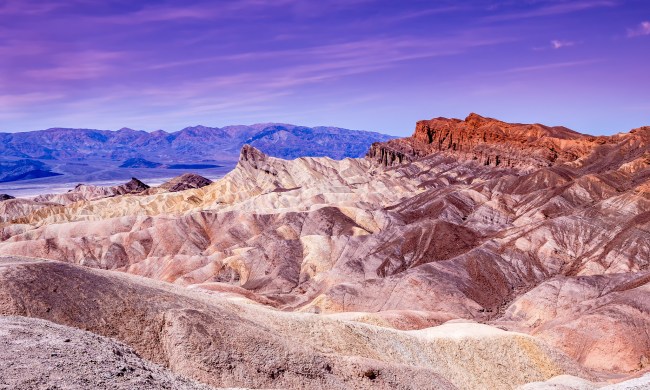
The Olympic Peninsula offers all of the outdoor attractions you could want: mist-enveloped mountains, pristine lakes, rugged coastal cliffs, and one of the best national parks in Washington state.
But most unique is the 1.3 million acres of enchanting old-growth rainforest, seemingly lifted straight from the pages of a fairy tale.
Most visitors flock to the Hoh rainforest to witness the iconic moss-covered trees, but the Quinault Valley offers a less crowded, equally stunning experience.
For those seeking an intimate and informed connection with the Quinault Rainforest, the one-of-a-kind 33-mile Lake Quinault Tour weaves comfort, educational rigor, and unrivaled access into the valley’s hidden gems.
Here’s what you can expect on the Lake Quinault Tour, alongside helpful tips on how to make the most out of your time in this otherwordly region of Washington.
What to expect on the Lake Quinault Rainforest Tour

The Lake Quinault Tour is primarily a driving tour and lasts approximately 4 hours. Guests will enjoy a full loop around the lake alongside a few off-road visits, with a comfortable 9:30 am departure time.
The tour begins and concludes in the historic Lake Quinault Lodge, and attendees seeking a hearty breakfast can dine in the Roosevelt dining room, conveniently located on-site. Tour-goers can expect lunch, restroom breaks, and a chance to explore the Washington rainforest on foot throughout the half-day excursion.
While about 0.5 to 2 miles of total walking is involved, it’s leisurely and on relatively flat ground, making it accessible to all outdoor enthusiasts.
The comfortable and clean coach van stops frequently so guests can stretch their legs and take a closer look at the rainforest’s flora and fauna. The van’s large crystal-clear windows are great for panoramic views and glare-free photos, and the temperature-controlled cabin makes the ride cozy year-round.
While circling the magnificent 4-mile-wide lake, certified guides expertly navigate tight channels to point out interesting features of the terrain, moving at a leisurely pace so everyone can savor the views.
The tour doesn’t feel rushed, and its slower pace amplifies the quiet magic of this place.
Rest in the basin of a waterfall

As the tour departs from the Lodge, you’ll first visit the Merriman Falls, a 40-foot gem right off the road that feeds into Lake Quinault. The next stop is Bunch Creek Falls, the largest waterfall on the tour, cascading over 60 feet. You’ll have time to enjoy each of these falls up close, greeted by the cool, gentle mist at the base.
Tour guides point out the various lichen and moss species that feed from the falls, even identifying their tiny microblooms. These waterfalls provide a perfect backdrop for photos, so be sure to have your camera or phone on hand.
Behold the largest Sitka Spruce tree

Known as the valley of rainforest giants, the Quinault territory boasts 6 of 8 giant champion trees on the Olympic Peninsula. Tour-goers will have a chance to see, touch, and hear about the history of the largest Sitka spruce tree in the world. Its circumference spans over 58 feet, and it towers 191 feet tall.
The root system of the millennium-old tree extends in a wide circle, mirroring the sprawl of its majestic branches above. Visitors can stand right in the roots and crane their necks back for a surreal glimpse into the canopy of this ancient arboreal giant.
Our tour guide informed us that this particular tree has dozens of species living on it at any given time. From birds to insects, the Sitka spruce is a thriving ecosystem all on its own.
Although this is the only champion tree visible along the tour’s route, you can expect to see countless other equally impressive specimens.
Experience the mystical Maple Glade Nature Trail

After viewing the giant Sitka spruce, your tour navigates even deeper into the rainforest. At this point, the woods begin to reveal their mystical nature.
The verdant moss slowly closes in on the road, the tree canopy thickens, and bright spring maple leaves cast their glow on the forest floor. Towering old-growth trees can be seen in all of their glory, just inches from one’s seat, enveloped by ferns, vines, and lichens.
Visitors then arrive at the Maple Glade Nature Trail, an easy yet immersive half-mile loop hike through the heart of Quinault’s rainforest.
You can learn more about the rainforest by sticking with your certified guide. If you like exploring independently, this is the perfect opportunity to depart for a wondrous moment of solace.
The stunning trail meanders around a series of bogs and marshes, each a unique bio-universe in its own right. There are several small paths off the main trail that lead to even more hidden treasures, including vibrant mushrooms and peaceful birdwatching nooks.
Wildlife sightings

While not guaranteed, visitors may spot black-tailed deer, elk, and even bears throughout the Quinault Valley. Banana slugs can be found in the spring and summer months, and birds, accompanied by their unique and rich songs, are present year-round.
Make sure to bring a pair of binoculars with you – they’re handy for seeing things far away and up close, and your guide will provide you with identification cards that can help you spot and name the creatures you’ll see along the way.
The cultural and ecological history of the Lake Quinault Rainforest

The Olympic Peninsula’s history is as captivating as the sweeping views and ancient trees. This places the Lake Quinault tour as a crucial player in preserving the valley’s cultural heritage.
The Quinault tribe has inhabited the southwest corner of the Olympic Peninsula for thousands of years and the tour briefly passes through what is currently established as the Quinault reservation.
You’ll glimpse insights into the tribe’s culture and way of life, from ancient whale hunting practices to modern tribal governance.
From Spanish fur traders arriving in the region in the 1700s to the completion of the area’s first road in the early 20th century, generations of non-indigenous visitors have etched their cultural mark on the land.
The establishment of Olympic National Park in 1938 further expanded the tourism industry in the region and solidified the preservation of the unique ecosystem of Lake Quinault.
Quinalt’s guides recant the most notable and entertaining stories, such as the floating pavilion built in 1922 for prohibition-era parties aboard the lake, narrowly skirting alcohol regulations.
Plenty of ephemera remains from the rainforest’s early days, spanning half-composted cabins, rusted vehicles, and historic homesteads. These human-made structures are dotted along the tour, contrasting the lush landscape and adding a whole new layer to the rainforest’s story.
Pair your tour with a night in the historic Lake Quinault Lodge

The historic Quinault Lodge is the perfect base for embarking on the Lake Quinault Tour. The lodge was built in 1926 and still stands today as one of the most iconic landmarks within Olympic National Park.
The hotel feels rustic yet distinguished, an intentional choice by architect Robert Reamer, who also designed the famed Old Faithful Inn at Yellowstone National Park.
The warm wooded structure is draped in sleepy mosses, with an artistic rain gauge painted on its chimney. Guests can enjoy access to over 15 trails, and an impressive interpretive trail sits right on the property.
Select rooms offer idyllic views, cozy fireplaces, and covered porches, well-suited for enjoying the gentle morning rain over the lake. Historic images of the Quinault Lodge and the surrounding valley adorn every room, reflecting the hotel’s rich heritage.
While the lodge is a great choice for quick stops between adventuring, the property’s amenities make it a restorative option for visitors simply seeking rest in the tranquil valley.
The Roosevelt dining room offers fine Pacific Northwestern cuisine during breakfast, lunch, and dinner. A robust drink list features expertly mixed spirits, local beers, and select wines. Guests can enjoy a cocktail in the main lodge, out on the lawn, or even from the comfort of their room, serviced by the bar’s friendly and attentive staff.
Sauna and pool access are available year-round, and in summer months, visitors can swim, paddleboard, or kayak in the clear, cool waters of the lake, only steps from the lodge. Outdoor games like horseshoes are strewn throughout the property, and waterfront picnic tables provide sweeping mountain and lake views.
The Lake Quinault Tour and historic Quinault Lodge create a perfect pairing for a fairy-tale escape. So take time to enjoy this magically-laden landscape – even a quick visit to this special region could infuse you with the soothing properties of the Quinault rainforest.



